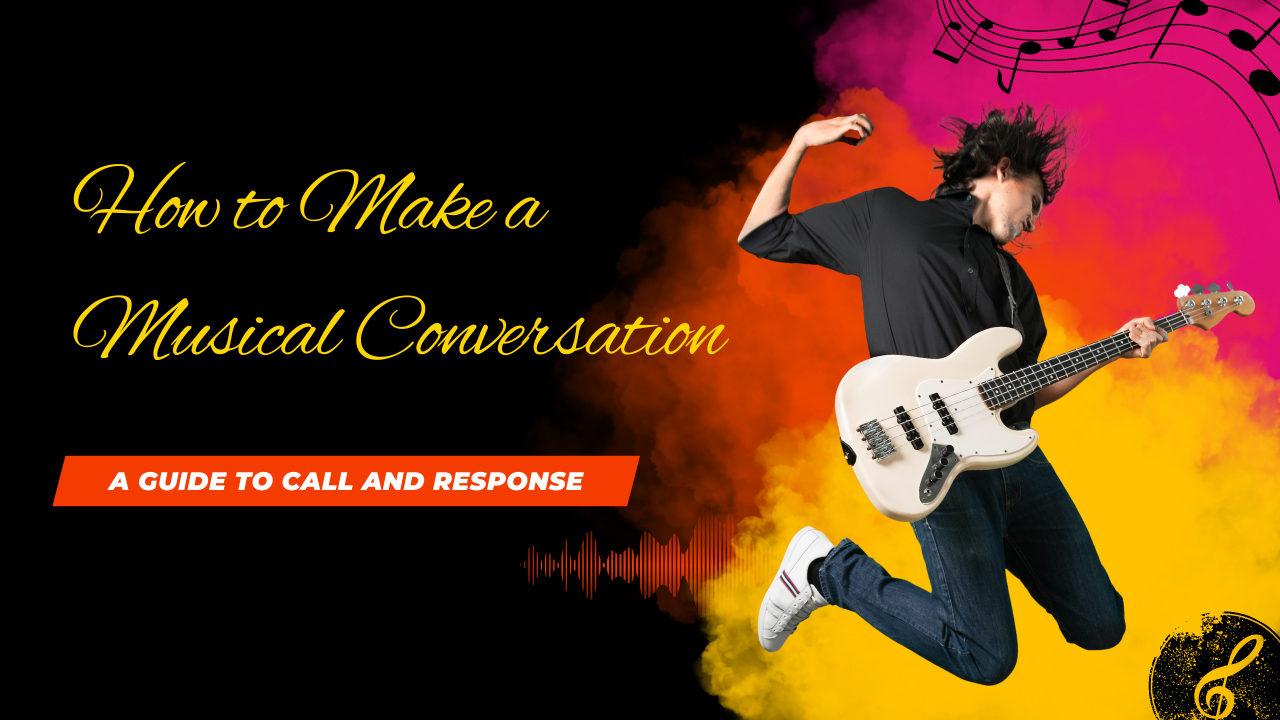Do you love making music?
Do you want to learn how to have a musical conversation with someone else?
If so, this is the blog post for you! In today’s post, we will teach you all about call and response.
This is a fundamental concept in music that allows two or more people to communicate musically with each other.
We will give you some tips on getting started and show you examples of call and response in action. Let’s get started!
Bonus: If you want to find out how to transpose a song in Music, read this blog post!
What Is Call And Response?
Call and response is a musical conversation between two or more people. It is a back-and-forth exchange of musical phrases. The first person (the “caller”) plays or sings a phrase, and the second person (the “responder”) replies with their own phrase. This exchange can happen between two people or involve a whole group of musicians.
What Does Call And Response Sound Like?
It is a musical form in which one partner repeats what was just said, word for word. The second voice will either agree with everything that came before it or offer an alternative interpretation of whatever has been proposed by their companion’s statement without repeating anything exactly as heard before them.
Call-and -Response tunes often make use of complementary material at times like these when confirming expectations through agreement but also using contrasting ideas where necessary, so there isn’t too much predictability about future moves from both sides!
Where Can You Use Call And Response?
Call and response is a powerful tool for composers, as it can be used in many different ways. Here are a few examples:
1) Lead And Backing Vocals:
One common use of call and response is in lead and backing vocals. For example, the lead singer might sing a line, and then the backing singers would repeat it back. This can create a powerful effect, especially if the lead singer is singing something particularly emotional or catchy. Call and response can also be used between different instruments, such as a guitar and a drum. In this case, the guitarist might play a riff, and then the drummer would respond with a fill. This can help to create a more interactive and exciting performance.
2) Improvising:
Call and response is also commonly used in improvisation. For example, if a jazz musician is soloing, the rest of the band will often respond to what they are playing. This can help to create a more dynamic and exciting performance. It can also be used between different instruments, such as a piano and a saxophone. In this case, the pianist might play a chord progression, and then the saxophonist would improvise over it. This can help to create a more cohesive performance.
3) Arranging:
It can also be used in arranging. For example, if you have two melody lines that you want to combine, you could have one line play the melody while the other line responds with harmony. This can help to create a more interesting and nuanced sound. Alternatively, you could have one instrument play the melody while another instrument responds with a countermelody. This can help to add texture and interest to your arrangement.
4) Trading Fours:
In jazz, “trading fours” commonly uses call and response. In this case, two musicians will take turns soloing for four bars at a time. This can help to create a more interactive and exciting performance.
Melodic Techniques:
Call and response have been used in music since the beginning of time. It’s such a powerful tool that can be found all over songs from every generation, showing up big or small depending on your needs for it at any given moment! We hope this guide has helped you understand what call and response is, how it works, and how it can be used. If you’re interested in learning more about melodic techniques, check out our other blog post on the subject!

